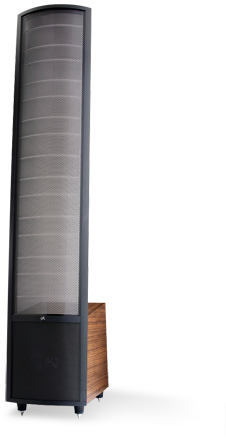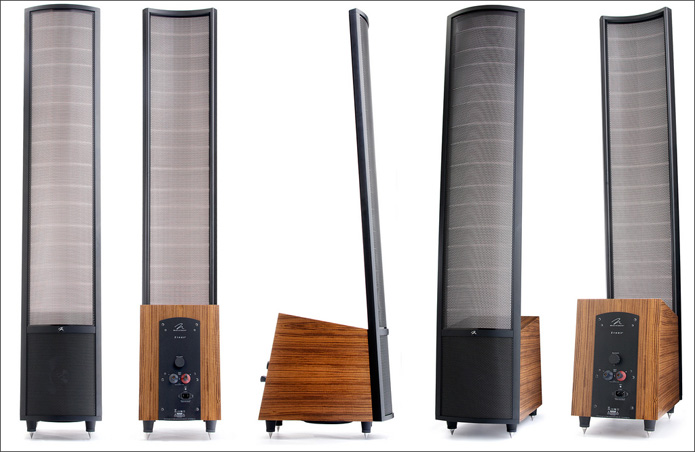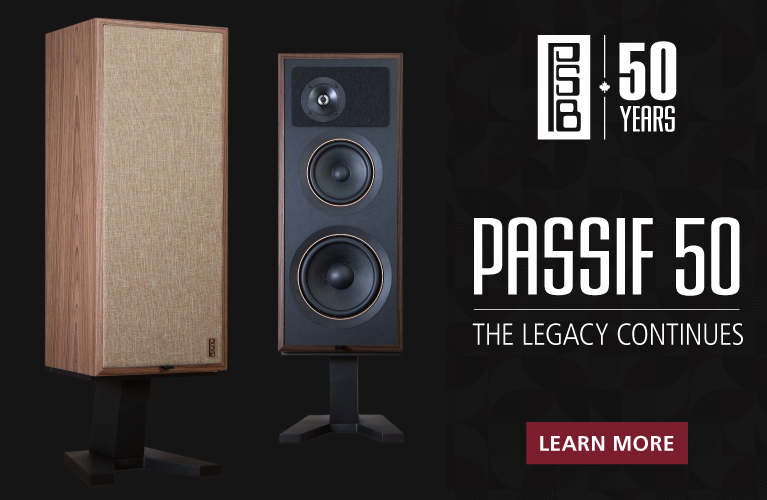
 Promise you won’t tell anyone . . . the other night I lit a bunch of candles, wrapped myself in a nice, warm blanket, and listened to LPs while drinking a big mug of herbal tea. Boy oh boy -- does that sound precious, or what?
Promise you won’t tell anyone . . . the other night I lit a bunch of candles, wrapped myself in a nice, warm blanket, and listened to LPs while drinking a big mug of herbal tea. Boy oh boy -- does that sound precious, or what?
You’ve got to admit, though, that the candles suit the vinyl. There’s a distinctly Luddite aura that infuses both records and candles in this age of electricity and digital information. OK, I’m reaching a bit here, but still, it was a pleasant evening, and it led to some interesting observations on audio and audiophiles.
First, with the lights dimmed and the room lit by the warm glow of candles, I found myself looking at my system from an aesthetic viewpoint. For true audiophiles, the appearance of the gear is irrelevant, or so the theory goes. Sound quality is all that matters -- the sole function for a component is to produce musically accurate sound. So long as they sound good, an audiophile should be happy with speakers made from rough concrete, with rebar sticking out at odd angles. Yet as I sat there in my herbal-tea-infused trance, I found myself enjoying the symmetry of my system not only for its sound, but for its visual appearance.
You see, right now my system includes a pair of MartinLogan Ethos electrostatic speakers, and with a candle placed on each woofer cabinet, just behind the panel, my system went all miracle-at-Lourdes on me, transforming my basement into an enchanted grotto. Can’t you just see it? That magic moment made me realize that I’d always hankered after a pair of MartinLogans, and I think I’m not alone. If I’m right, the audiophile world falls into two camps: those who own or have owned MLs, and those who wish they did.
Even before they play a note, MartinLogan electrostatics announce their presence: "I’m elegant," these speakers say. "I’m poised, beautiful, and ethereal. Don’t you love me?" One of my close friends, an interior designer, generally finds little to love in the appearance of whatever boxy speakers I have in for review. But on her last visit she took one look at the MLs and said, "How much?" Malene was smitten, and that hadn’t happened before.
Electrostatic speakers have about them an aura of wizardry. Those flat, translucent panels with their high-voltage stators project a futuristic Star Wars vibe that’s all the more exciting when you consider that the technology dates back to 1957. If you’re sitting there reading this and wondering how the heck electrostatic speakers work, here’s a quick synopsis: Each panel has two perforated metal grilles, or stators, which closely sandwich an extremely thin membrane that’s coated with a conductive material. The membrane is jazzed up to a high voltage, and the audio signal flows through the stators, but out of phase. So when the signal swings to the negative, the membrane is repelled from one stator and pulled toward the other, in the process activating the room’s air molecules to create soundwaves. Cool, isn’t it? (If you want to read more about this, there’s some great info on MartinLogan’s website.)
The Ethos ($6495 USD per pair) is fairly close to the top of MartinLogan’s range; it’s the second-smallest model in their Reserve ESL series, which tops out with the CLX Art ($22,995/pair). The Ethos is loaded with the best technological advances, including the company’s proprietary XStat stators, a Vojtko DSP-controlled amplifier, and hand-rubbed finishes for the veneers on the woofer enclosures.
Those veneers are Black Ash, Dark Cherry, and, like my review samples, a gorgeous Flamed Teak. The surface is matte, but the high quality of the veneer shows clearly through. MartinLogan can also customize the speaker with just about any finish you can imagine. Although the Ethos is a hair under 60" tall, it weighs a svelte 42 pounds. Of course, that thin, wispy panel weighs next to nothing; nearly all of the speaker’s weight is in the woofer enclosure. That woofer is needed -- the Ethos’s modest panel can’t produce much low bass, so ML mates it to a powered 8" woofer driven by a 200Wpc amp, and an 8" passive radiator. ML claims that the Ethos goes down to 34Hz, ±3dB.
Each Ethos comes with a generic but reasonably chunky power cord, and I used them -- I didn’t experiment with aftermarket cords. The binding posts are solid units with large plastic wing nuts that were easy to manipulate. The woofer crosses over to the main panel at 375Hz, and has a level control that affects its response below 100Hz, within a range of ±10dB. I found the level control very sensitive, but it wasn’t too difficult to find an appropriate setting.
I found it telling that MartinLogan claims for the Ethos an efficiency of 92dB. None of the three amps I used with the Ethoses had any difficulty driving the speakers. More on that later.
The Ethos doesn’t switch on its woofer amp until it senses an input signal. This means that after the speakers have sat without a signal for a while, it takes a few seconds for the amps to spool up. But the panels, too, share this delay, so the speaker truncates the first few notes of a listening session. I found this behavior no big deal, but it might bother those who were toilet-trained too early.
Setup
When I received my review samples, I didn’t yet know that the Ethos is a powered speaker. MartinLogans of yore had always had a passive woofer in a small sealed box, and so had required a decent amount of power to snap to attention. But it makes sense to give the sealed woofer of the Ethos its own amp, as you’ve got to plug the speakers into the wall anyway to power up the stators. As soon as I saw that woofer-level control ’round back, I knew my listening sessions were going to be even more fun than I’d anticipated.
As far as positioning them went, the Ethoses gave the lie to that audiophile legend of electrostatic speakers being finicky houseguests. I plonked the MLs down in my best-guess spot, hooked them up to the Blue Circle Audio BC202KQ combo of amp and power supply, and sat down to listen. All it took was a bit of fussing around with lateral placement and a touch of toe-in, and I was done. Ten minutes, tops.

Listening
From that point on, I was captivated by the MartinLogans. Right out of the gate they sounded just spectacular, with a sumptuously rich midrange and a delicate, restrained treble that nonetheless sounded extended and detailed. Rickie Lee Jones’s Pop Pop (LP, Geffen/Original Music 7) has been in constant rotation (stop me if you’ve heard this one) on my turntable, and this wonderful if rather quirky album highlighted the strengths that let the MLs grab me by the scruff of the neck and make me sit still and listen to music for hours on end.
"Dat Dere" almost falls into the dreaded audiophile category. After all, it’s beautifully recorded without sounding overprocessed, it’s fairly sparse, and the images just snap into focus. The only thing that prevents this track from consignment to constant play at audio shows is the brilliance of the music. Jones’s delicate, quirky voice had an almost physical presence right in the center of the soundstage. While you might write this off as a kind of audiophile anthropomorphism, I found that the height of the Ethoses’ panels added a rightness to vocals. I wasn’t just hearing a voice emanating from a point in space -- I was hearing an entire head, with a neck, chest, and lungs attached.
While I noticed this feeling of size and scale with all instruments and all music, I found it most noticeable with voices. In "Temptation of Egg," from Giant Sand’s brilliant Chore of Enchantment (CD, Thrill Jockey 79), singer Howie Gelb backs-and-forths with two delightfully sloppy backing vocalists. Gelb sits off to the right, the other singers dead center. Although I know little about the personnel on the album, let alone the logistics of the recording session, I could clearly hear the two backing singers crowded around one microphone. What I was hearing was detail via spatial cues rather than via tonal manipulation.
We audiophiles come to associate greater detail with a forward midrange and treble. While this isn’t always the case, more often than not detail is code for bright. Much of the interesting stuff in music takes place from the upper midrange on up, but it seems to me that detail works as a knife does: the sharper and thinner it is, the better. So the overtones of a woman’s voice, the ring of a trumpet’s bell, the sizzle of an electric guitar -- all provide those spatial cues we’ve come to know and love. And when a speaker accentuates those overtones, voilà! Detail!
The Ethos did detail in an entirely different way. First, there was no sizzle up on top. The Ethos had a top end that was soft, silky, and perhaps just the tiniest bit reticent. Studio-processed music showed just how forgiving the Ethos’s treble was. Liz Phair’s Whitechocolatespaceegg (LP, Matador OLE 191-1) sure is processed, what with it being a well-produced but straight-ahead rock’n’roll album. Phair’s a crafty artist, and it’s hard not to like her on a strangely personal level. She’s somewhat tough but still charmingly vulnerable -- in "Johnny Feelgood," she sings of a rough boyfriend who knocks her around, states straight up that she likes it, yet doesn’t come across as a victim. At any rate, listening to this track through the Ethos, I clearly heard a three-dimensional clarity to the hi-hat in the right channel, and for the first time noted a strange, flanged effect in that cymbal’s sound. If anything, the cymbals on Whitechocolatespaceegg were slightly down in level through the Ethos compared to other speakers -- but perversely, they also had more depth, reality, and clarity than I’m used to.
I have absolutely no doubt -- and it seems almost too obvious to point it out -- that the three-dimensionality that assisted the Ethoses’ retrieval of detail was due in large part to the dipolar nature of the speakers’ electrostatic panels. The Ethos’s backwave bounces off the front wall, right? In that way the Ethos involves the entire room, and no doubt contributes to the strong presentation of objects in three-dimensional space. Is this type of portrayal accurate? Maybe, maybe not. But it sure is fun to listen to.
Other than a few favorite pieces, my classical-music window is rather narrow, but the Ethos made me dig some dusty FLAC files out of the bottom of my server. While they did orchestral bombast quite well, I found myself drawn to simpler works. Mezzo-soprano Magdalena Kozená’s clear, beautiful, well-controlled voice on her disc of Handel arias, Ah! mio cor (Archiv Produktion 001039102), just popped out of the center of the soundstage.
When I brought the Ethoses upstairs to install in my secondary system, I again unceremoniously plonked them down where they looked kind of OK and hoped for the best. Hooked up to my new and already well-loved Peachtree Audio decco2 tubed integrated amplifier (a stupendous bargain at $799), the $6495 MartinLogans were also being fed by a Squeezebox Touch music server. That doesn’t sound like an ideal pairing, but my stars! Did this setup sound fantastic. Back to Ah! mio cor -- in the title selection, from Handel’s Alcina, Kozená’s voice materialized right in the middle of the soundstage; but while the image was crystalline, it was also properly positioned in three-dimensional space with a wonderful sense of depth, and tons of it. This was immensely satisfying music being reproduced in a wonderful manner. I wouldn’t hesitate to buy a system comprising these three components.
The Ethos’s low end took me completely by surprise. For the first couple of months I hadn’t even looked at the speaker’s specifications, and so was unaware that its front-firing woofer was being augmented by a downward-firing passive radiator. Again and again I caught myself looking up at the speakers (I often read while listening to music) when a particularly low and well-defined bass note slammed through my room. I’ve had speakers with powered woofers in my room before, and I’ve always ended up futzing with the woofer level, trying to find a good balance: Turn the level too high and the woofer is audible. Keep it too low and the speaker sounds thin and reedy. And this balance shifts dramatically with almost every recording.
But with the Ethoses, I quickly found a comfortable level that gave me tight, juicy bass that was satisfying without interfering with the panels’ delicacy and transparency. I often use Eleni Mandell’s Country for True Lovers (CD, Zedtone 3) to evaluate a component’s bass response, partly because it’s a mostly acoustic recording with all the good bits working together, but largely because the music is just so damn good. Mandell’s voice is evocative and strong, but with a gentle innocence that really works for me. And, very important, rich bass lines are threaded throughout the entire album. That bass is recorded somewhat hot, but not so much as to overpower the music. The Ethos’s woofer was exceptionally quick -- it needs to be to keep up with the panels -- and through the MLs, Mandell’s "Another Lonely Heart" rang out, the ’stats contributing a luscious, easeful midrange and treble augmented by a deep, exceptionally realistic low end. Together, these two disparate technologies, electrostatic and dynamic, cooperated to create an absolutely wonderful musical presentation.
I’ve saved the best for last. Imagine my surprise when, about halfway through the review period, I finally read the Ethos’s specifications and noted that MartinLogan rates this formidable speaker at an efficiency of 92dB. I contacted the ever-affable Song Kim, of Song Audio, and arranged a loan of his wonderful SA-300 MB 300B tubed monoblock amplifiers. I wasn’t convinced that the Songs would be able to drive the Ethoses, but they’ve surprised me on a number of occasions, so I hooked them up and gave them a try.
I booted up the system and my jaw hit the floor. I’d cued up Rickie Lee Jones’s "Dat Dere," and before I got back to the couch I could hear that this combo was something special. All of the spatial and tonal aspects that had so endeared me to the Ethoses were there in full, but the rich ease and harmonic fullness -- already strong points of the MLs -- had received a huge boost.
Via the Song SA-300 MBs, the Ethoses projected Jones’s voice even further out of the virtual world of recorded music. I could sense the recording venue as a palpable, physical space. This combo was otherworldly.
The midrange lushness that has always been the hallmark of Song Audio amps was there in spades, but it wasn’t overdone. The highs were at least as extended as with the Blue Circle and Peachtree amps, but the Songs added an incredibly endearing silkiness to the sound. Down in the basement, the SA-300 MBs weren’t quite as whip-crack tight as the solid-state amps, but they certainly weren’t soggy or poorly defined. Although I could play the Ethoses pretty much as loudly as I wanted, even with snappy rock music, once the volume reached a certain point, little was accomplished by turning up the gain. Still, though I like to listen quite loud on occasion, the MLs, powered by the Song Audio amps, kept up, and didn’t limit me in any way.
Conclusion
I do my best to remain objective when I write these reviews, but every once in a while I find myself smitten with a speaker. Sometimes that speaker is reasonably priced, but usually it’s offensively expensive. Despite the fact that $6495/pair sounds to me like a fair chunk of change, I’d have to put the MartinLogan Ethos at the "reasonable" end of the price spectrum. Considering that the Ethos is one of the most musically satisfying speakers I’ve heard in my room, I also have to say that, at $6495, it’s a flat-out bargain. Buy a pair if you can swing it. And if you’re shopping for speakers that a single-ended-triode tube amp can drive, you should give the Ethos a long, hard listen. You won’t regret it.
. . . Jason Thorpe
jasont@soundstagenetwork.com
Associated Equipment
- Analog source -- Pro-Ject RPM 10 turntable, Roksan Shiraz cartridge
- Digital source -- Logitech Squeezebox Touch
- Phono stage -- Aqvox Phono 2 CI
- Preamplifier -- Sonic Frontiers SFL-2
- Power amplifiers -- Audio Research VT100, Blue Circle Audio BC202KQ, Song Audio SA-300 MB
- Integrated amplifier -- Peachtree Audio decco2
- Speakers -- Definitive Technology Mythos STS
- Speaker cable -- Nordost Frey
- Interconnect -- Nordost Frey
- Power cords -- Nordost Vishnu, Shunyata Research Taipan
- Power conditioner -- Quantum QBASE QB8, Shunyata Research Hydra Model-6
MartinLogan Ethos Loudspeakers
Price: $6495 USD per pair.
Warranty: Five years parts and labor.
MartinLogan, Ltd.
2101 Delaware St.
Lawrence, KS 66046
Phone: (785) 749-0133
Fax: (785) 749-5320
E-mail: info@martinlogan.com
Website: www.martinlogan.com






















